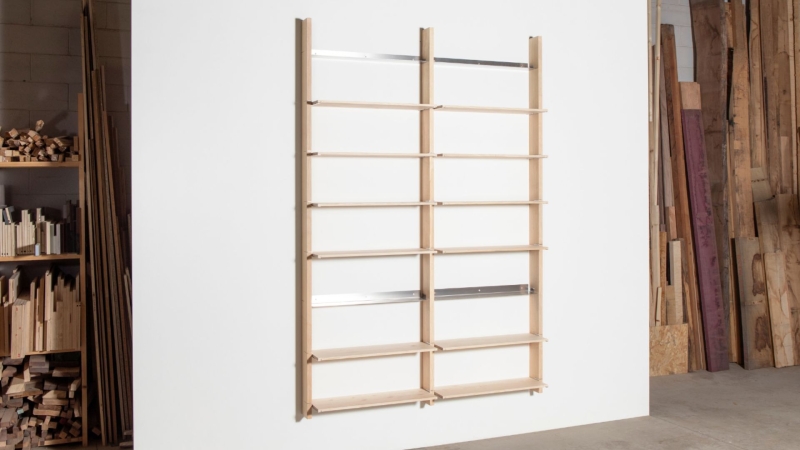The Milan-based studio, founded by four designers in 2021, is dedicated to bespoke interiors and the self-production of its work, including product collections and installations. Their approach is characterized by a thoughtful use of materials and experimentation.
Michele Chillé, Andrea Favalli, Sara Vaccari, and Michele Zadra are the founders of Abuse Studio, a design practice with a carpentry workshop. Their different backgrounds (architecture, urban planning, and design) converge in the creation of interiors, installations, products, and workshops. Founded in 2021 with a single workstation in a shared carpentry shop, by 2024 the studio had expanded into a dedicated design space just five minutes from its production area – no longer just a desk, but an entire section of the workshop with a dedicated team.
The studio’s projects are characterized by attention to detail, minimal use of materials, and essential construction techniques. In terms of interiors, the studio specializes in designing personalized spaces and custom furniture for private clients, ranging from kitchens to bookshelves, using a balanced combination of materials and a fresh, contemporary aesthetic.
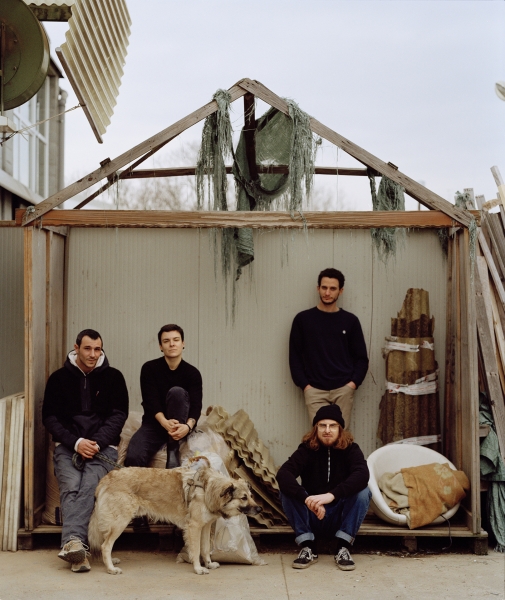
Michele Zadra, Sara Vaccari, Michele Chillé and Andrea Favalli, founders of Abuse Studio. Ph. Giovanni Emilio Galanello
Their first product collection exemplifies their hands-on approach across all development stages, from sourcing solid wood to refining the details of steel reinforcement. Presented during Fuorisalone 2025, the Serie 1000 was conceived as a research project: the main goal was to challenge themselves through the design process, solve technical details, explore form, and use the minimum amount of material possible.
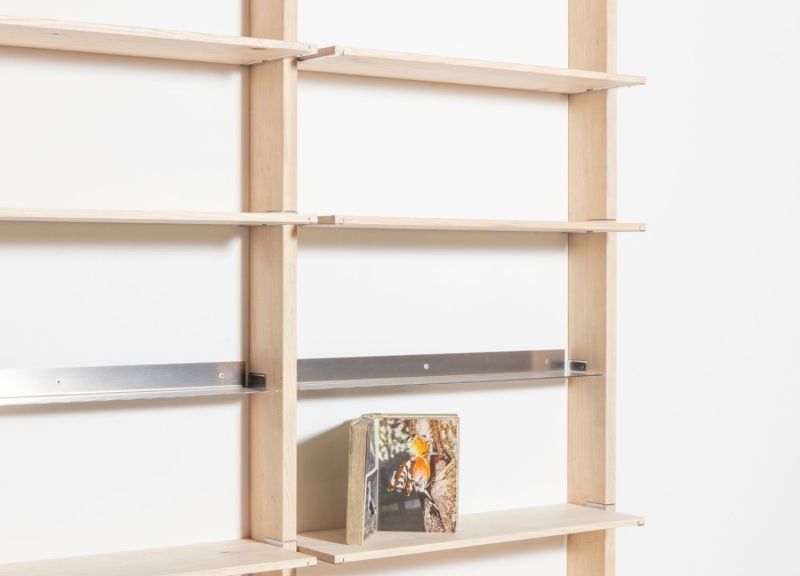
1000S rack, Serie 1000, Abuse Studio. Ph. Giovanni Emilio Galanello
The result consists of four pieces: the bookshelf 1000L, the table 1000P, the seat 1000C, and the modular shelving unit 1000S. All are made of solid wood sourced from nearby forests in Lombardy and Piedmont, finished with linseed oil to highlight the natural look, and combined with steel to reinforce smaller wooden sections. For instance, compared to standard furniture, horizontal profiles can support a shelf over one meter long with only 20mm thickness, preventing flexing.
The collection was showcased at the San Secondo space with a setup centered on circularity: Abuse dismantled an existing, unused newsstand, cut its flooring, repainted its various components, and reassembled them into a new form. This structure was then left in the space to be reused.
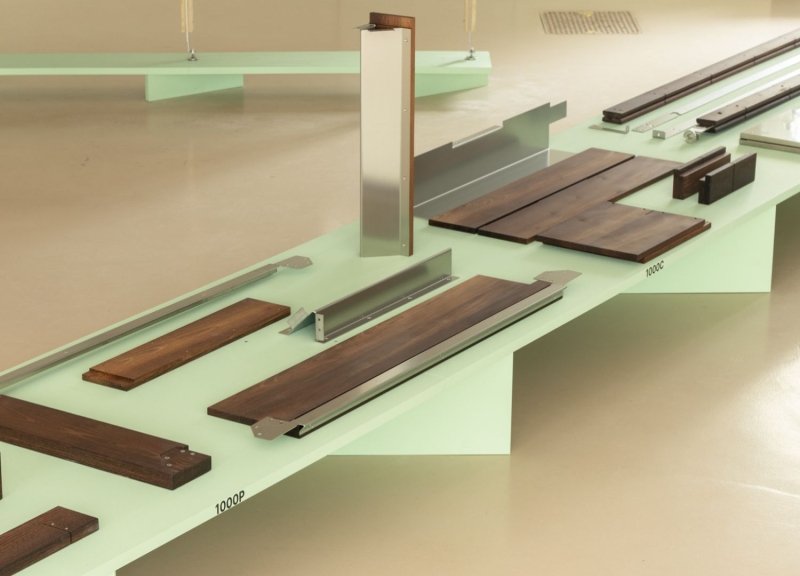
Serie 1000 exhibition, Fuorisalone 2025, Abuse Studio. Ph. Giovanni Emilio Galanello
Another noteworthy project is their collaboration on the Holy See Pavilion at the 18th International Architecture Exhibition – La Biennale di Venezia. In this case, Abuse worked with Studio Albori on “Social Friendship”: Gathering in the Garden – Participation 2023, commissioned by Cardinal José Tolentino de Mendonça and curated by Roberto Cremascoli. The team used reclaimed materials from a Studio Albori construction site in Cortina (wood, windows, repurposed PVC sheets) and marsh reed from Chioggia to create a convivial space on the Island of San Giorgio.
Installation for Holy See Pavilion at the 18th International Architecture Exhibition – La Biennale di Venezia, Abuse. Ph. Marco Cremascoli, Matilde MartinoNot only interiors and products, but also workshops: the next event Abuse will take part in is a Summer school in Bergamo, from September 7 to 14. During the program, interventions will be designed in three different locations by three working groups: one with the studio itself, one with Atelier Remoto, and one with Iris Lacoudre and Luca Eminenti.
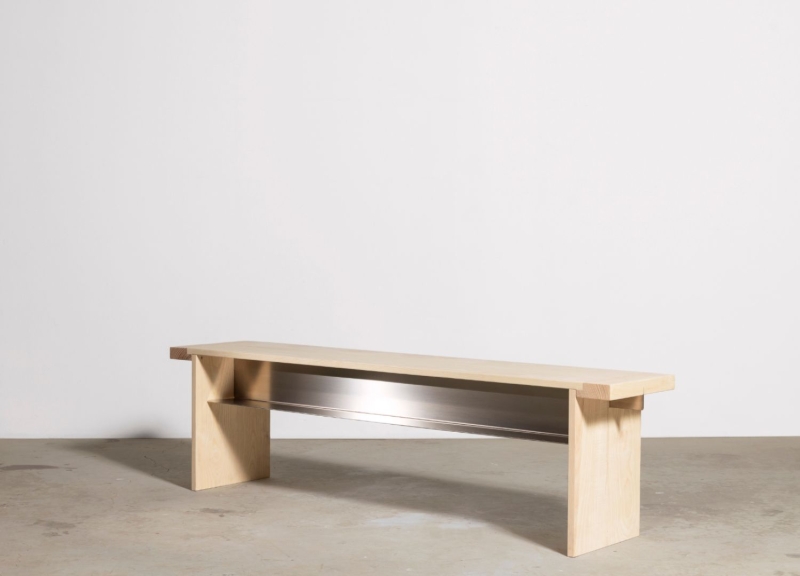
1000C seat, Serie 1000, Abuse Studio. Ph. Giovanni Emilio Galanello
As mentioned, the Abuse team not only designs but also self-produces its pieces, positioning itself between a traditional design studio and an artisanal workshop. This hybrid model allows them to maintain full control over every stage of the process while creating interiors, products, and installations that reflect a thoughtful and hands-on design philosophy, grounded in both intellectual and manual work.
